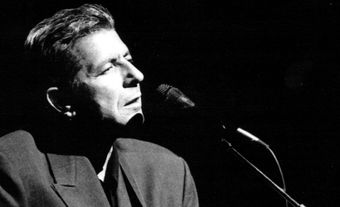Neil, Al
Al (Alan Douglas) Neil. Pianist, composer, visual artist, author, b Vancouver 26 Mar 1924. He studied with Glenn Nelson and Jean Coulthard but, save for some lessons with Wilf Wylie, was self-taught as a jazz pianist. Drawn to bebop by recordings of Bud Powell, et al, he began playing in Vancouver clubs in the late 1940s with his own groups and as a sideman to other musicians. Neil was a central figure in the 1950s and early 1960s at the Cellar, a musician-operated Vancouver club, where he accompanied such US jazzmen as Carl Fontana, Art Pepper, and Sonny Red. He was seen in performance at the Cellar with the saxophonist Glenn MacDonald and the bassist Don Thompson in the NFB's In Search of Innocence (1963). A Neil quartet from this period (Dale Hillary, alto saxophone; Lionel Chambers, bass; Bill Boyle, drums) was heard with the poet Kenneth Patchen on the LP Kenneth Patchen Reads with Jazz (1959, Folk FL-9718).
Briefly inactive, Neil returned to music with a trio (Richard Anstey, bass; Gregg Simpson, drums) in 1965, introducing the freer and more personal - if not, eventually, wholly eccentric - performance style that would characterize his music over the next 20 years. In a review of the limited edition LP, The Al Neil Trio Retrospective: 1965-1968 (Lodestone lr-7001), released in 1976, Richard Baker (Coda, Feb 1977) observed that Neil's music from this period 'sounded strange even to ears already accustomed to Ornette [Coleman], Cecil Taylor and Sun Ra. Neil derived as much from John Cage, Alfred Jarry, the I Ching... as from any trends in free jazz or, for that matter, bop... [D]evelopments during the intervening years make it difficult to realize what a departure these performances represented at the time'.
Music has shared Neil's attention with writing and visual art. His writings, which are often of a semi-autobiographical nature and recount some of his experiences as a musician, include poems, a novel (Changes, Toronto 1975; London, Ont, 1989), and a collection of short stories (Slammer, Vancouver 1980). In the visual arts he organized multimedia performances in the 1970s and turned to mixed-media collage in the early 1980s. Most of his infrequent concerts/readings/installations during the post-Cellar period have been in gallery settings, eg, at his own Sound Gallery and Motion Studio (1966), the Vancouver Art Gallery (1968, 1972 - as part of the one-man show West Coast Lokas - and 1989), the Art Gallery of Ontario, Toronto (1969), Museum of Modern Art, Paris (1973), and the Coburg Gallery, Vancouver (annually, 1984-7). He also gave several concerts in Vancouver during the 1980s at the Western Front, where a show of his collages, 'Origins: Celtic Series,' was mounted on the occasion of his 65th birthday.
Neil's collaborators in the 1970s and 1980s included the percussionists Simpson and Howard Broomfield (the latter for the LP Boot and Fog, 1979, Music Gallery Editions MGE 33) and the bassists David Lee, Lisle Ellis, and Clyde Reed. A second Neil retrospective, Selections: 3 Decades, produced by Lee, John Oswald, and Alex Varty, was issued on cassette by Lee's Nightwood Editions in 1991.

 Share on Facebook
Share on Facebook Share on X
Share on X Share by Email
Share by Email Share on Google Classroom
Share on Google Classroom

